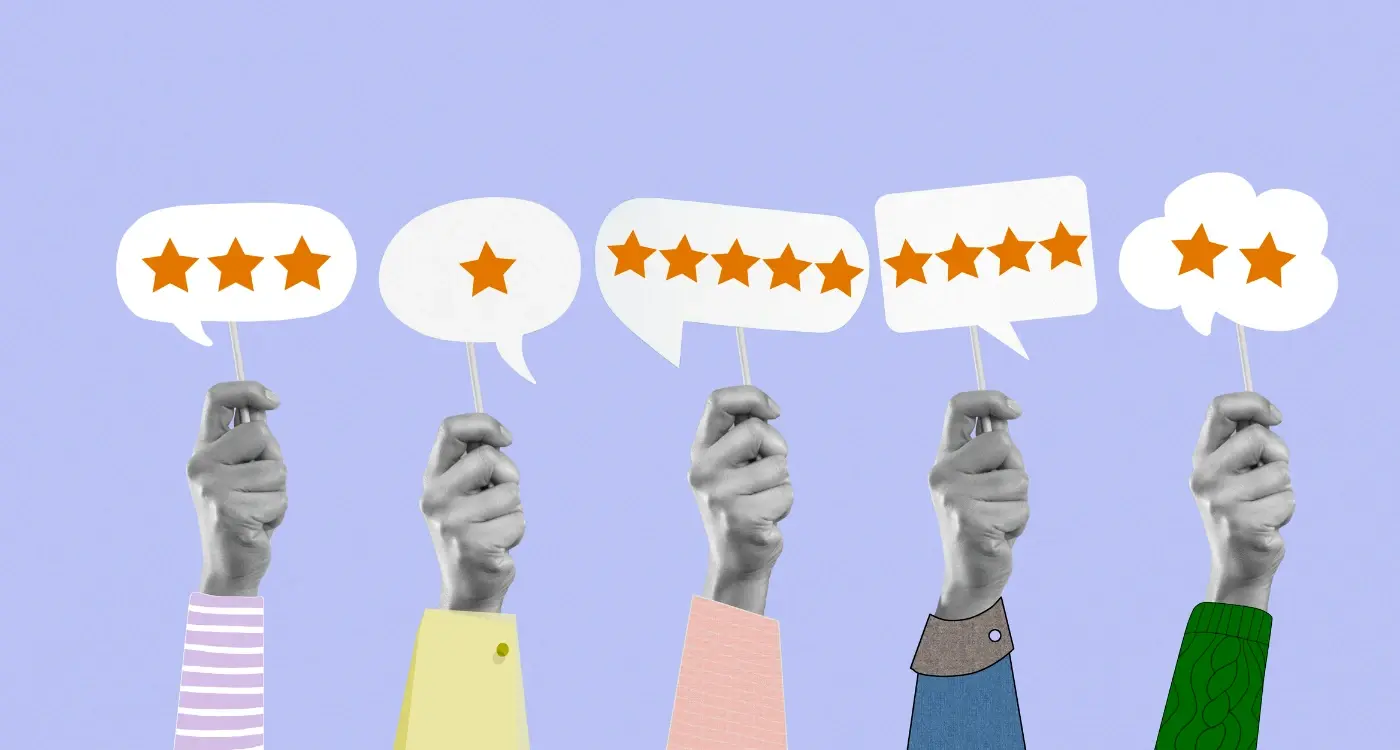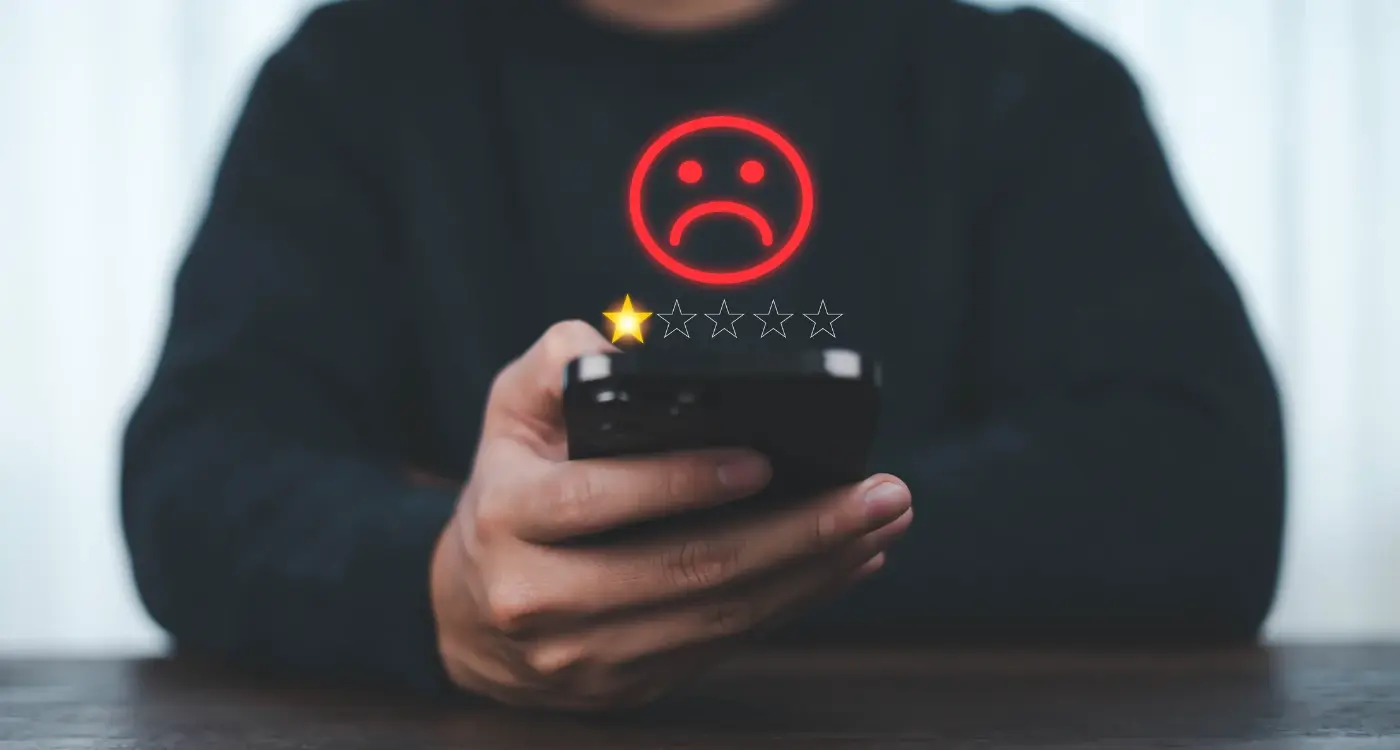What Should I Look For When Studying App Store Reviews?
When was the last time you actually read app store reviews—properly read them, not just glanced at the star rating? Most developers I work with treat reviews like background noise, something that happens after launch rather than a goldmine of user insights waiting to be discovered. But here's what I've learned after years of digging through thousands of reviews: they're basically free user research that your competitors are probably ignoring.
App store reviews aren't just feedback; they're unfiltered conversations about what users really think when they believe no one important is listening. Sure, some reviews are rubbish—angry rants about unrelated problems or complaints that make no sense. But buried in there are patterns that can completely change how you understand your market, your users, and most importantly, what your app should actually do.
The best product insights often come from the people who hate what you've built, not the ones who love it.
I've seen apps pivot their entire business model based on review analysis, and others miss opportunities worth millions because they focused on star ratings instead of reading the actual words. The thing is, review analysis isn't just about fixing bugs or adding features—it's about understanding the emotional journey your users go through and spotting gaps in the market before your competitors do. Most people approach reviews backwards; they look at their own app first. Actually, you should start with your competitors' reviews. That's where the real secrets are hiding, and that's exactly what we're going to explore together.
Reading Between the Lines of Star Ratings
Star ratings aren't just numbers—they're stories waiting to be decoded. After years of analysing app store data for clients, I've learned that a 4.2-star app can sometimes tell you more about user behaviour than a perfect 5-star rating ever will.
Here's the thing most people get wrong: they focus on the overall rating instead of the distribution. A quick glance at the rating breakdown reveals so much more. An app with mostly 5-star and 1-star reviews (what we call a "polarising pattern") usually means you've got a love-it-or-hate-it product on your hands. Meanwhile, lots of 2-3 star ratings suggest consistent mediocrity—users aren't angry enough to delete immediately, but they're not impressed either.
What Different Rating Patterns Actually Mean
I've noticed some fascinating patterns over the years. Apps that suddenly drop from 4.5 to 3.8 stars? That's usually a botched update. You'll often see this with dating apps or social platforms that changed their core features. On the flip side, a steady climb from 3.2 to 4.1 suggests a team that's actually listening to feedback and iterating properly.
The timing of ratings matters too. Fresh apps with hundreds of 5-star reviews in their first week? That screams fake reviews or aggressive friend-and-family campaigns. Genuine organic growth shows a messier, more realistic pattern with mixed ratings from day one.
- Sudden rating drops = recent update issues
- Polarised ratings (mostly 1s and 5s) = niche or divisive product
- Consistent 2-3 stars = mediocre user experience
- Too many early 5-stars = potential fake reviews
- Gradual improvement = responsive development team
Remember, a 4.0-star app that's climbing is often a better bet than a 4.8-star app that's been stagnant for months. Movement tells you there's active development happening.
Finding Gold in One-Star Reviews
Here's something most people get wrong about one-star reviews—they skip right past them because they're uncomfortable to read. But honestly? Those scathing reviews are often the most valuable feedback you'll get for your app development process. I've seen apps completely transform their user experience just by paying attention to what their angriest users were saying.
One-star reviews cut straight to the bone. Users don't hold back when they're frustrated, and that raw honesty tells you exactly where your app is failing. While five-star reviews might say "great app!", a one-star review will tell you "the login button doesn't work on Samsung phones" or "app crashes every time I try to upload a photo." That's gold dust for development teams.
Sort one-star reviews by date and look for recurring complaints that appeared after specific app updates—this often reveals which changes broke the user experience.
The key is reading between the emotional language to find the actual problems. When someone writes "this app is absolute rubbish and waste of time," they're usually not just being dramatic—they've hit a genuine barrier that stopped them from achieving what they wanted to do. Maybe the onboarding was confusing, or a key feature wasn't working properly on their device.
I always tell my clients to create a spreadsheet of one-star review themes. You'll start spotting patterns pretty quickly:
- Performance issues (crashes, slow loading, freezing)
- Usability problems (can't find features, confusing navigation)
- Technical bugs (login failures, payment issues, sync problems)
- Missing features (users expected something that wasn't there)
- Device-specific issues (works on iPhone but not Android)
What's really interesting is when you compare your one-star reviews to your competitors. If users are complaining about the same things across multiple apps in your category, that's a massive opportunity to be the one who actually solves that problem properly.
What Users Actually Mean When They Complain
After years of reading app reviews, I've learned that users rarely say what they actually mean. It's like decoding a secret language—when someone says "this app is confusing," they're usually not talking about the interface being too complex. They're telling you that your onboarding process is rubbish and they couldn't figure out how to get started.
Here's the thing: most users don't have the technical vocabulary to explain exactly what's wrong. So they use simple words to describe complex problems. When you see "slow" in reviews, it might mean the app takes too long to load, but it could also mean the user flow is inefficient and it takes too many taps to complete a task. Both feel "slow" to the user, but they require completely different fixes.
The Real Translation Guide
Let me break down what users actually mean when they write these common complaints:
- "Doesn't work" - Usually means they hit a bug during their first session and gave up immediately
- "Too complicated" - Your user interface assumes too much prior knowledge or skips explanation steps
- "Crashes all the time" - Often means once or twice, but it happened at a critical moment
- "Useless" - They couldn't find the main feature or it didn't match their expectations from your app store description
- "Waste of time" - The app didn't deliver value quickly enough in their first experience
The key is looking at when these complaints happen in the user journey. A "confusing" review from someone who used the app for five minutes tells a very different story than the same complaint from someone who's been using it for months. Context is everything when you're trying to understand what users really need from your app.
Tracking Changes in Review Sentiment Over Time
Here's something most people miss when they're analysing app store reviews—they look at everything as a snapshot rather than watching how things change over time. But honestly, that's where the real insights live. I've seen apps completely transform their user sentiment within months just by paying attention to these patterns.
When you track sentiment changes, you're basically watching your app's story unfold in real time. Did your latest update cause a spike in complaints about crashes? Are users suddenly mentioning a competitor they never used to talk about? These shifts tell you exactly what's working and what isn't, way before your download numbers start reflecting it.
Spotting the Early Warning Signs
The trick is looking for sudden changes rather than absolute numbers. If your reviews go from mostly mentioning "easy to use" to suddenly talking about "confusing interface" after an update, that's your canary in the coal mine right there. I always tell clients to track specific keywords week by week—you'd be surprised how quickly user language shifts when something goes wrong.
We used to love this app but the new version is impossible to navigate. Why did you change something that was working perfectly?
You'll also notice seasonal patterns if you look long enough. E-commerce apps get hammered during Black Friday if their checkout process can't handle the load. Dating apps see different complaints in January compared to summer. Fitness apps? January is brutal for server capacity complaints, then it goes quiet until the next new year. Understanding these cycles helps you prepare instead of just reacting to problems after they've already hurt your ratings.
Using Reviews to Spot Your Biggest Competitors
Here's something I've learned after years of digging through app reviews—users love to compare. They can't help themselves! And that's brilliant news for us because it means reviews are basically a treasure map showing you exactly who your real competition is.
I'm not talking about the obvious competitors you already know about. I mean the ones that are actually stealing your potential users. You know what I mean? The apps people mention when they're explaining why they're switching away from yours or why they downloaded yours instead of something else.
When users write reviews, they often mention other apps they've tried. "This is so much better than [competitor name]" or "I switched from [app name] and couldn't be happier." Sometimes they'll even say "Still prefer [other app] but this does the job." These mentions are gold dust—they tell you which apps users genuinely see as alternatives to yours.
What to Look For in Competitive Mentions
Users don't just drop competitor names randomly; they compare specific features. Pay attention to what they're actually comparing. One week I was analysing reviews for a fitness app and kept seeing mentions of three different competitors I hadn't considered before. Turned out users were comparing onboarding experiences specifically—not the main functionality.
But here's the thing that'll surprise you: sometimes your biggest competitor isn't even in your category. I've seen meditation apps losing users to podcast apps, and productivity apps competing with simple note-taking tools. Users don't care about App Store categories—they care about solving their problems.
- Direct feature comparisons ("better than X for tracking workouts")
- Switching stories ("came from Y app, much happier here")
- Wishlist comparisons ("wish it had Z's notification system")
- Price comparisons ("cheaper than A but just as good")
- Cross-category mentions ("use this instead of my banking app for budgets")
The real insight comes from reading between the lines. When multiple users mention the same competitor for the same reason, you've found a pattern. That's your cue to investigate what that other app is doing differently—and whether you should be doing it too.
Common Review Patterns That Reveal User Pain Points
After analysing thousands of app store reviews across different projects, certain patterns start jumping out at you. It's honestly quite fascinating how users express their frustrations in remarkably similar ways—even when they're talking about completely different apps.
The most telling pattern? When multiple users describe the same problem using different words. You'll see reviews saying "app keeps freezing," "crashes constantly," and "won't stay open" all describing the same stability issue. Users don't coordinate their language, so when you spot these clusters of similar complaints, you've found a genuine pain point that needs addressing.
The Language of User Frustration
Watch out for emotional language that escalates over time. Early reviews might say "occasionally slow to load" but later ones read "takes forever to open" or "completely useless now." This progression tells you that a minor annoyance has grown into a major problem—probably because it wasn't fixed quickly enough.
Another pattern I see constantly is users explaining workarounds they've discovered. When someone writes "if you force close the app and restart it works fine," they're actually doing your quality assurance testing for you. These reviews are gold because they show exactly how users interact with broken features.
Spotting Feature Gaps
Pay attention to reviews that start with "I wish this app could..." or "Would be perfect if it had..." These aren't complaints about broken functionality—they're requests for features that users genuinely want. When you see the same feature request appearing across multiple reviews, you've identified a clear opportunity for improvement.
Create a simple spreadsheet to track recurring themes in reviews. After reading 50-100 reviews, you'll start seeing patterns that would be invisible if you just glanced at star ratings.
The most valuable reviews often come from users who clearly love your app but are frustrated by specific limitations. These people have invested time learning your interface and want to see it succeed—their feedback is usually spot-on.
Right, here's something most people get completely wrong when studying app reviews—they spend ages combing through the one-star complaints and completely ignore the five-star praise. But honestly? Those glowing reviews are often where the real gold is buried.
When someone takes time to write a proper five-star review, they're telling you exactly what made your app click for them. Not just "great app!" but the detailed ones where they explain why they love it. These reviews reveal your app's actual strengths, the features that genuinely matter to users, and—this is key—the language real people use to describe your value.
I've seen this play out countless times. A fitness app might get loads of positive reviews mentioning how "simple" and "quick" the workout logging is. That tells you more about your competitive advantage than any focus group could. Users aren't just happy with the app; they're happy with specific aspects that your competitors might be getting wrong.
But here's where it gets interesting—positive reviews also show you patterns in user behaviour you might not have expected. Maybe people are using your productivity app for something completely different than what you designed it for. Or they're combining features in ways that create unexpected value.
Good reviews also reveal your ideal user profile. Look at who's leaving detailed positive feedback and what they have in common. Are they small business owners? Students? Parents juggling multiple schedules? This information is pure marketing gold because these are the people most likely to become long-term, engaged users.
The language in positive reviews becomes your marketing copy. When users describe your app as "straightforward" or "doesn't get in my way," that's how you should be talking about it too. Real user language always beats corporate speak.
Making Sense of Review Data Without Going Mad
Right, let's be honest here—staring at hundreds of app store reviews can feel like trying to drink from a fire hose. I've seen clients get completely overwhelmed by the sheer volume of feedback, especially when their app has thousands of reviews. The trick is to work smarter, not harder.
Start by sorting reviews into buckets. I usually go with three main categories: bugs and technical issues, feature requests, and user experience complaints. Don't try to analyse every single review; instead, look for patterns that appear across multiple reviews within the same time period. If ten people mention your login process is confusing within a week, that's data worth acting on.
Focus on Recent Feedback First
Here's something that might save your sanity—prioritise reviews from the last 30 days over everything else. App store algorithms weight recent feedback more heavily anyway, and these reviews reflect your current app version. Older reviews might be complaining about problems you've already fixed.
The most valuable insights come from grouping similar complaints together, not from trying to address every individual concern
Use a simple spreadsheet to track recurring themes. Create columns for review date, star rating, main complaint type, and whether its something you can actually fix. Some complaints are just people having bad days—you can't fix those! Focus your energy on the technical issues and genuine usability problems that multiple users are experiencing.
Set yourself a time limit for review analysis. Spending more than an hour per week reading reviews is usually overkill unless you're dealing with a major crisis. Remember, you're looking for trends and patterns, not trying to personally respond to every piece of feedback.
Right, so we've covered quite a bit of ground here—from decoding star ratings to finding the real gems hidden in angry reviews. After years of building apps and watching how users actually behave (versus what they say they want), I can tell you that app store reviews are basically a goldmine of user research that most developers completely waste.
The thing is, most people treat reviews like they're either good or bad. But that's missing the point entirely. Every review, whether its a glowing five-star love letter or a furious one-star rant, is telling you something about your user experience. And more importantly, they're showing you patterns that you probably can't see from inside your development bubble.
I mean, you can spend thousands on user testing and focus groups, but sometimes a frustrated mum writing a review at 11pm because your app crashed during her online shopping tells you more about real-world usage than any formal research ever could. These reviews capture genuine emotions and actual use cases that you might never think to test for.
The key thing I want you to remember is that studying reviews isn't just about fixing bugs or adding features. It's about understanding the gap between what you think your app does and what users actually experience. That gap? That's where your next breakthrough lives. Whether you're launching your first app or you've got dozens in the store, those reviews are your direct line to the people who matter most—the ones actually using your product in the real world.
So go dig into those reviews. Your users are waiting to tell you exactly how to make your app better.
Share this
Subscribe To Our Learning Centre
You May Also Like
These Related Guides

Which Review Response Strategies Build User Loyalty Fast?

What Should I Do With Negative Reviews on the App Store?



